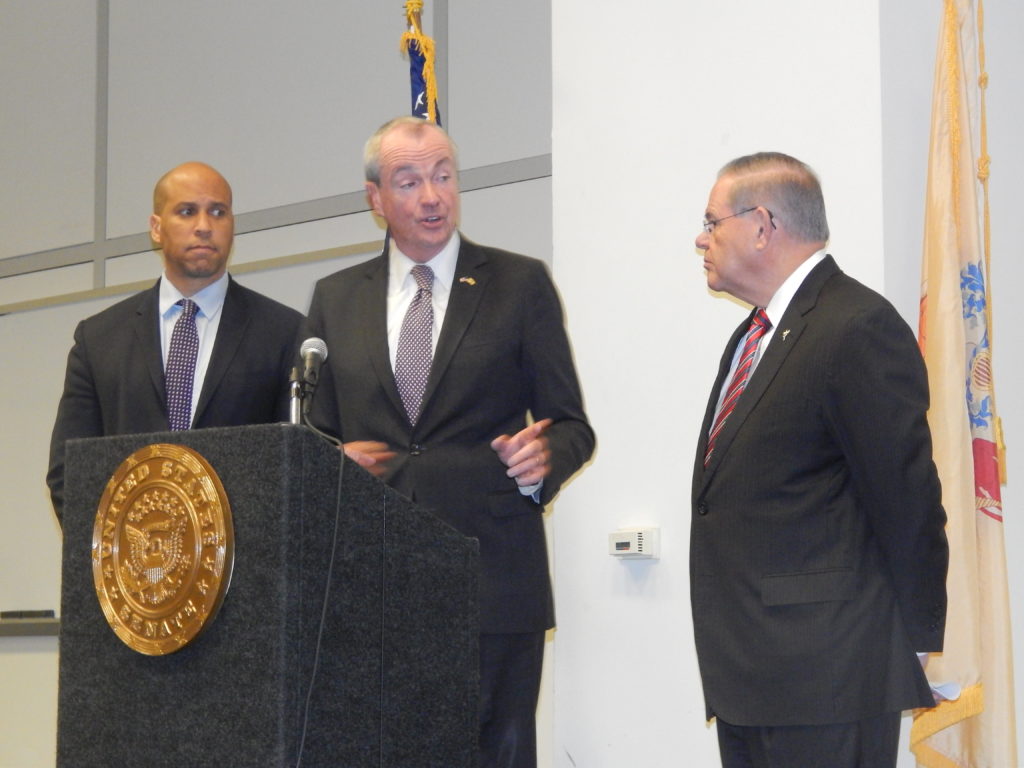Baby Bonds…Oh, Baby…Oh, Maybe

Tucked into Governor Murphy’s recent budget was an intriguing proposal for something called Baby Bonds. The idea is a good one, borrowed from Senator Cory Booker and it has the potential to be a great one. But as with most things, there a lot of details to work out before we jump for joy.
The idea is simple and relies on the time value of money. Basically, every child in New Jersey born to a family earning less than $131,000 per year gets a bond from the state. How much each child gets is unclear. But the baseline is apparently $1,000. This bond is conservatively invested, interest grows and when the kid turns 18, they can take the money, use it to buy a house, start a business or pay for college. It sounds great. Every kid would get something but those in poverty would get more.
Senator Booker originally introduced the idea as an alternative to reparations for slavery. Unlike reparations, race has nothing to do with who gets the money. However, since poverty disproportionately effects African Americans the Baby Bonds idea disproportionally helps them and other people of color who have suffered systematic and institutional racism for generations. Like I said it sounds great, a direct attack on income equality that focuses on clear class differences instead of messy racial ones.
But there are a lot of issues that need to be clarified and worked out. It is possible that when the specifics of the plan are revealed all these issues will be addressed. I hope so. But at a minimum some clarifications are needed.
One-Time Contribution?
As currently articulated, it seems like this is a one-time $1,000 contribution on the new kids’ birthday. If true, that means (using Cory Booker’s math) that at 18, the child will have a whopping $1,651 to buy that house, start that business or go to that school. Hardly the blow to income inequality that it initially sounds like.
Under Senator Booker’s plan, the poorest among us, those at 100% of the federal poverty level, would get an additional $2,000 per year until they were 18. Under that plan, the poorest child would have just over $46,000 when they turned 18. Now we are talking. However, this obviously raises the cost of the plan. Instead of a $1,000 taxpayer investment in the poorest child the investment suggested by Senator Booker is about $35,000. That raises the total costs of the program from $72,000,000 with Murphy’s on-time plan to $2,520,000,000 under Booker’s model.
Who qualifies?
The governor’s plan provides the benefit of a Baby Bond to all families earning up to 500 times the federal poverty rate. In New Jersey, that means a family of four earning $131,000 per year would still get this benefit. As I mentioned it is unclear if the plan is $1,000 per kid– end of story– or if additional contributions would be made over the next 18 years. However, as important is whether every child under the threshold amount gets the same benefit or the benefits get smaller as families get richer. If everyone gets the same amount, this is nothing more of a tiny tax break than a serious attempt at closing the income gap.
Administrivia isn’t trivial
Keeping track of 72,000 kids is not a simple task. In theory, this is a program that goes on every year, compounding the complexity as the number of kids explodes over time. People move in and out of the state. If you are born in Newark and move to Philadelphia when you are 7 what happens to your baby bond? Or even more difficult, what if you move away when you are 7 but come back when you are 14? Do you get the entire value of the bond or is it subtracted by the 7 years you left? People change names as families change. John Smith at birth might end up as John Thomas when mom remarries. We can deal with that, but it takes administration and that takes money. Where does that money come from? Do we take it out of the check given to the 18-year-old? Could be. But someone must pay.
Some guidelines
There are lots of smart people around the governor to help figure this all out. But before we get all gushy and excited about being the first to implement a real plan to combat income inequality, we need some guideposts and guidelines about the program.
Focus on the poorest among us
The program should be more focused on the poorest among us. Instead of giving 72,000 babies a tiny check when they turn 18, we should focus on the approximately 7,200 babies born each year to families at the very bottom rung. Instead of helping the family of 4 earning $131,000 we ought to focus on the family of 4 earning $25,000 a year. We can scale up from that. But let us take care of the poorest folks first.
Contribute more than once
A single contribution is waste of money. To really address income inequality in a meaningful way, contributions must happen more often. Senator Booker’s plan is yearly, but there certainly could be contributions every 4 years if yearly proves too expensive. Overcoming income inequality will take much more than a one-time gift.
Strings attached
If New Jersey, is going to be a beacon of the progressive policy dreams designed to overcome income inequality, let us at least be willing to attach strings to it that make it focused on true working class of New Jersey. Move out of state? Benefit disappears. On public assistance? The benefit decreases for every year you are on it. Perhaps we could even stipulate that using the money for in-state college tuition at a public university means you get more of it than going out of state or not going to college at all. But the point is this. This can’t be a benefit you get by simply breathing in New Jersey. To get the full benefit requires some commitment and work for the state of New Jersey.
I hope that this idea is more than just a one shot to get good coverage in the New York Times. I think with some commitment and hard work to craft it right– it can be.
Matthew Hale is professor of political science at Seton Hall University.











With all do respect this idea was not conceived by Cory Booker. This idea was first enacted during the depression by PMG Farley chairman of the DNC and FDR.
https://www.google.com/amp/s/amp.theatlantic.com/amp/article/613525/